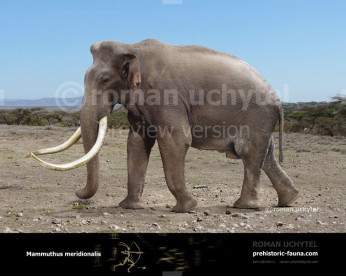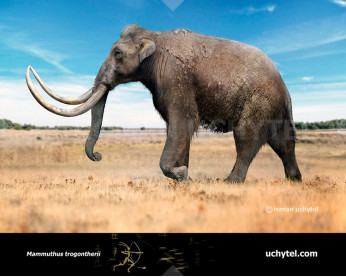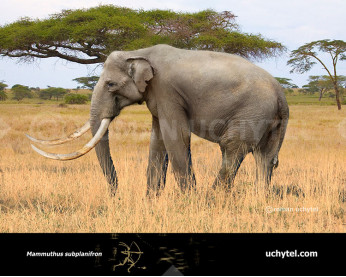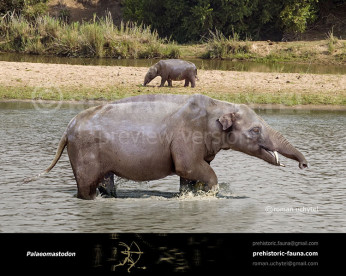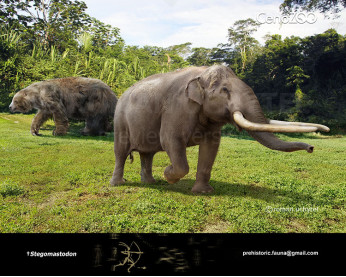Zygolophodon (Mammut borsoni)
424424Zygolophodon (†Zygolophodon (Vacek 1877))
Synonyms: Mastodon borsoni, Mammut borsoni
Order: Proboscidea
Family: Mammutidae
Dimensions: length - 6,5 m, height - 3,5 m (max - 4,1 m), weight - 16000 kg
Expansion: from the Miocene to the Middle Pleistocene (North America, Asia, Africa and Europe)
Large species: Zygolophodon borsoni (Greece)
Zygolophodon is an extinct genus of African, Asian, North American and European mammutid that lived from the Miocene to the Middle Pleistocene. It may have evolved from Tetralophodon. While collecting fossils in the Clarno Formation of Oregon during 1941, noted paleobotanists Alonzo W. Hancock and Chester A. Arnold recovered the most complete Zygolophodon skull known at the time. Zygolophodon borsoni is a large species that was sometimes considered as a species of Mammut, and it was one of the largest terrestrial mammals of all time. With a shoulder height of about 3.9–4.1 metres and a weight of about 14–16 tonnes, it approached the size of Paraceratherium, and was heavier than several sauropod dinosaurs.
Zygolophodon (†Zygolophodon (Vacek 1877))
Synonyms: Mastodon borsoni, Mammut borsoni
Order: Proboscidea
Family: Mammutidae
Dimensions: length - 6,5 m, height - 3,5 m (max - 4,1 m), weight - 16000 kg
Expansion: from the Miocene to the Middle Pleistocene (North America, Asia, Africa and Europe)
Large species: Zygolophodon borsoni (Greece)
Zygolophodon is an extinct genus of African, Asian, North American and European mammutid that lived from the Miocene to the Middle Pleistocene. It may have evolved from Tetralophodon. While collecting fossils in the Clarno Formation of Oregon during 1941, noted paleobotanists Alonzo W. Hancock and Chester A. Arnold recovered the most complete Zygolophodon skull known at the time. Zygolophodon borsoni is a large species that was sometimes considered as a species of Mammut, and it was one of the largest terrestrial mammals of all time. With a shoulder height of about 3.9–4.1 metres and a weight of about 14–16 tonnes, it approached the size of Paraceratherium, and was heavier than several sauropod dinosaurs.

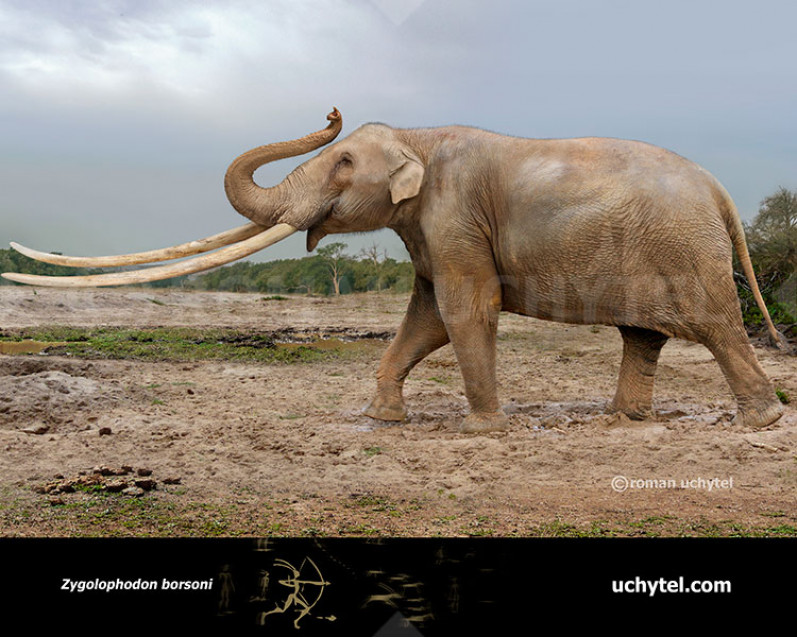
-797x638.jpg)
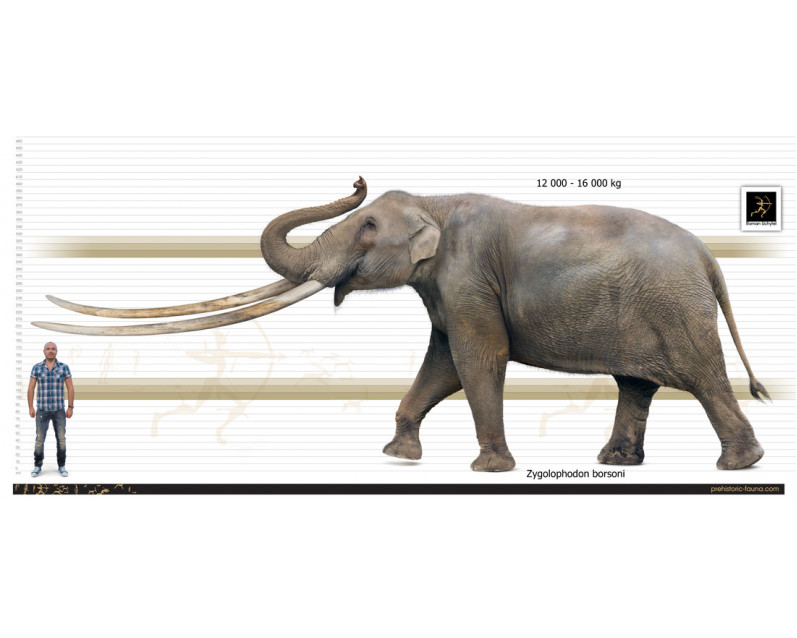

-70x56.jpg)

-346x277.jpg)
-346x277.jpg)
-346x277.jpg)
